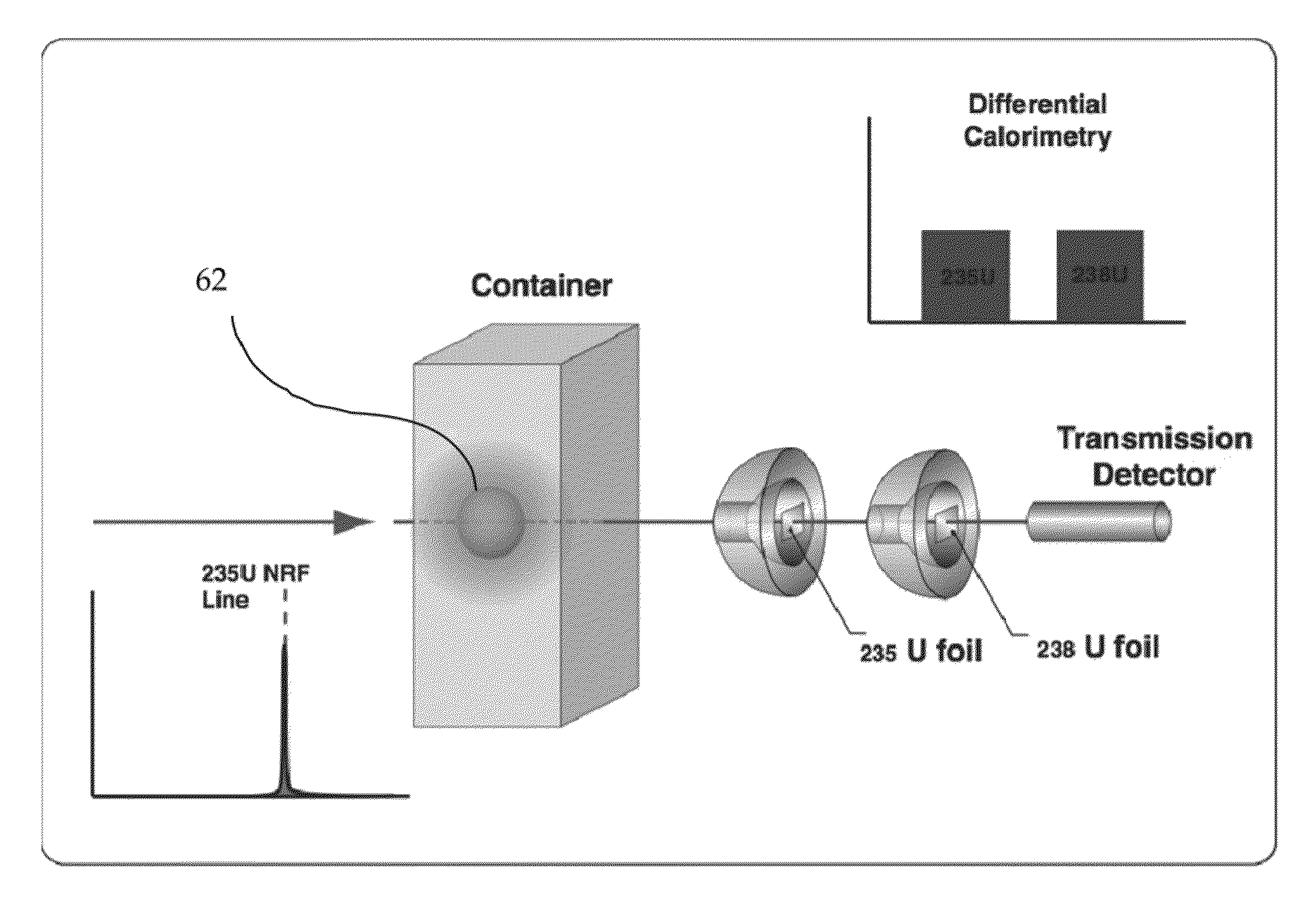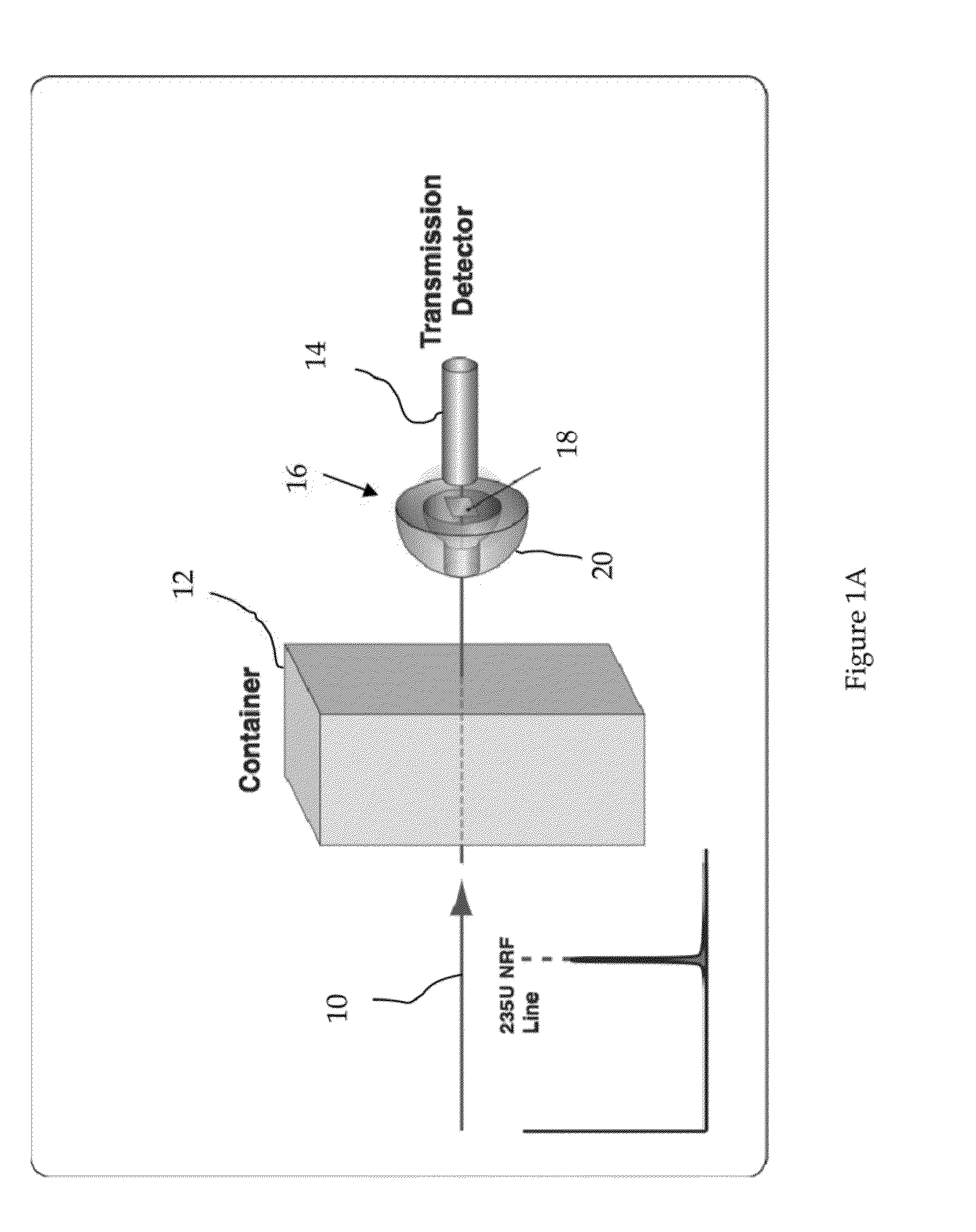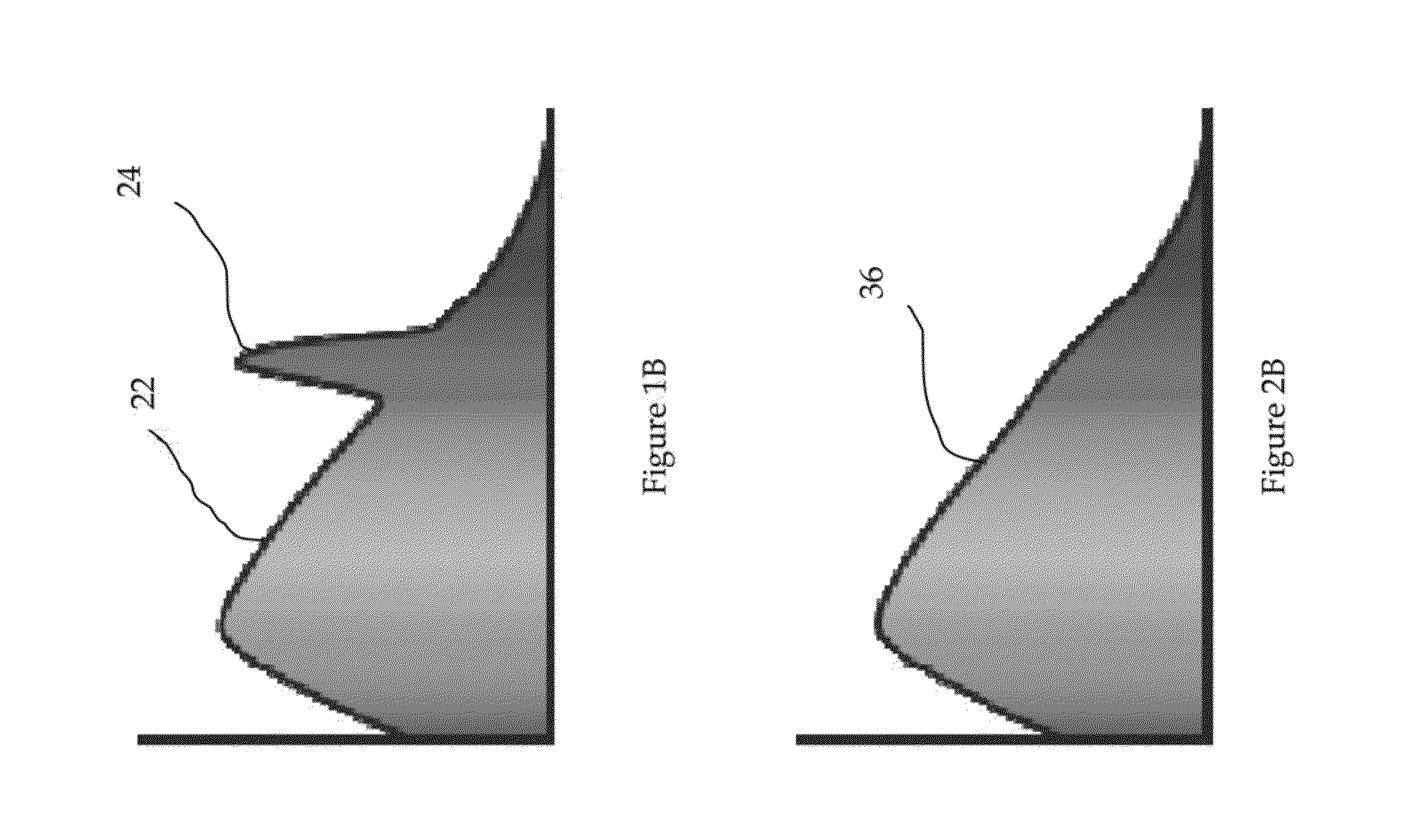Dual isotope notch observer for isotope identification, assay and imaging with mono-energetic gamma-ray sources
a gamma-ray source and isotope identification technology, applied in the field of monoenergetic gamma-rays, can solve the problems of significant limitations, inability to achieve the task, and inability to better achieve the resolution of known gamma-ray spectroscopy technologies, and achieve the effect of efficient detection, assay and imaging
- Summary
- Abstract
- Description
- Claims
- Application Information
AI Technical Summary
Benefits of technology
Problems solved by technology
Method used
Image
Examples
Embodiment Construction
[0032]FIG. 3A shows an embodiment of the present invention where there is no U235 or U238 in the path of the beam. Specifically, MEGa-ray probe beam 50 is tuned at a U235 NRF line. The path of beam 50 as it traverses container 52, does not intersect any U235 or U38 material. After passing though container 52, beam 50 propagates to and through a first foil 54, which is surrounded by an integrating detector 56. After passing through foil 54, beam 50 propagates to and through a second foil 58, which is surrounded by an integrating detector 60. After passing through foil 58, beam 50 propagates onto an integrating detector 62. Since beam 50, which is tuned at the U235 NRF line, does not encounter any U235 as it passes through container 52, there is no reduction of U235 resonant photons within beam 50. Therefore, U235 foil 54 produces a larger amount of NRF than it would have if beam. 50 had encountered U235 in its path through container 52. If a sufficient quantity of U235 had been prese...
PUM
 Login to View More
Login to View More Abstract
Description
Claims
Application Information
 Login to View More
Login to View More - R&D
- Intellectual Property
- Life Sciences
- Materials
- Tech Scout
- Unparalleled Data Quality
- Higher Quality Content
- 60% Fewer Hallucinations
Browse by: Latest US Patents, China's latest patents, Technical Efficacy Thesaurus, Application Domain, Technology Topic, Popular Technical Reports.
© 2025 PatSnap. All rights reserved.Legal|Privacy policy|Modern Slavery Act Transparency Statement|Sitemap|About US| Contact US: help@patsnap.com



